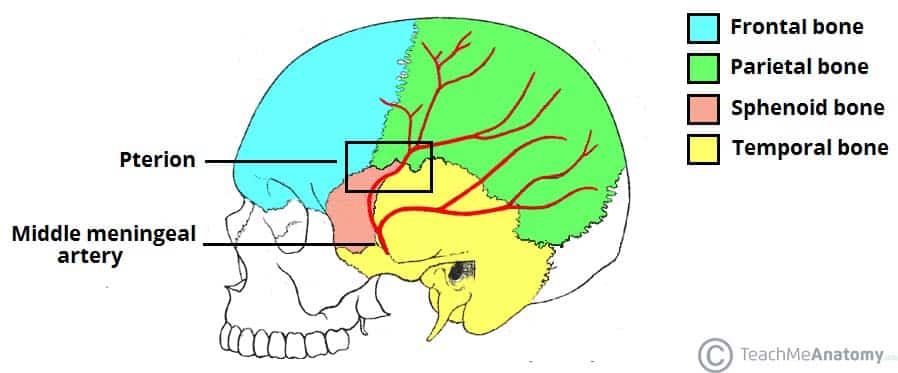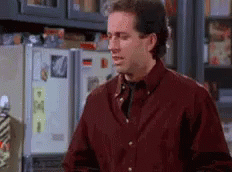- Joined
- May 17, 2020
- Messages
- 7,498
- Reaction score
- 9,046
It's a foul. Let's talk about it.
First let's review how the unified rules define them:
Above ear level the prohibited area is only 2 inches wide.
/cdn.vox-cdn.com/assets/881027/Illegal_Striking_Zones_PIC.jpg)
Basically the rule seems to exist to prevent serious injury from a rabbit punch.https://en.wikipedia.org/wiki/Rabbit_punch However, such injuries seem to be incredibly rare. Only one death listed on wikipedia, and not from a fight. An amateur soccer player sucker punched a referee in the back of the neck, it messed up the arteries in his neck, and he died 2 days later.
In both Lewis-Oleinik and Dobson-Agapova the winning fighter appeared to land one or more strikes to the back of the head in the middle of the finishing sequence. MMA refs don't enforce this foul the same way as they do for say, groin strikes or eye pokes, in which case, even if 100% accidental they immediately call a timeout. With a strike to the back of the head the ref will generally just warn the attacking fighter but not interrupt. This difference makes sense even though the unified rules don't say different fouls should be enforced differently.
The forbidden area is located on the parietal and occipital bones:


The thinnest part of the skull is not the back of the head, it's an area around the temple called the pterion which is where several bones come together:

The thickest part of the skull (not counting the jawbone) is apparently slightly different in men and women; in men it's the parasagittal posterior parietal area, or in other words, the rear part of the parietal bone right around the center line dividing left from right. The top of the area you're not allowed to hit is actually well protected. In women it's the posterior parietal area midway between the sagittal line and the superior temporal line. Same place as in men but a bit further from the center line.
It seems to me that insofar as the 2-inch strip below the crown is off limits, it's not because it's particularly dangerous to get hit there compared to other parts of the skull. Rather it's just an abundance of caution because we're so worried about the neck and base of the skull.
With a groin strike or eye poke, it's a very specific organ which if hit is going to produce a very different experience compared to the surrounding tissue. It often happens by accident in a neutral position and immediately produces a pain response that is totally disproportionate to the amount of skill or technique involved. Plus obviously with eye pokes we are concerned about the specific risk of fighters losing vision. With strikes to the back of the head, they often come in a dominant position after several other legal strikes to the head have landed. There's no tactical advantage to specifically targeting the back of the head. All the head strikes are going to hurt. If the ref calls a timeout and separates the fighters, he's ruining the flow of the most compelling moment in the fight, and almost guaranteeing that the final result will be controversial. The other issue is that if you aggressively police back of head strikes, fighters will just turn their head into them, which is not legitimate defense.
Going back to the Dobson fight, the first strike in the below sequence is legal, the second and third are illegal, the fourth and fifth are fine, the sixth is illegal, and the seventh is fine. The ref warns her after the sixth punch and she adjusts. But again, these are not cheap shots, they're not intentional, they're not especially damaging, they're just punches we want to discourage because we're worried about the back of the neck and base of the skull. What the ref did here is exactly the right way to handle this situation, unless someone is very deliberately targeting the prohibited area.
In the Lewis fight I think all the punches in the actual finishing sequence might be OK (though it's hard to tell with the camera angle). However in the first round Lewis lands a couple blows to the back of the neck area, and Herb Dean verbally warns him. I think after the first two blows the following punches were probably both legal and more effective:
FWIW if you break a bone in the base of the skull you get what's known as a basilar skull fracture which can lead to some pretty weird symptoms like raccoon eyes. https://en.wikipedia.org/wiki/Basilar_skull_fracture#:~:text=A basilar skull fracture is,from the nose or ear. This is the type of injury that kills racecar drivers when they crash; not sure if an MMA fighter could realistically cause a severe basilar skull fracture with just their fists.
First let's review how the unified rules define them:
Strikes to the spine or the back of the head. The spine includes the tailbone. The back of the head is defined as the area starting at the crown of the head and running directly down the centerline of the head with a one inch variance to each side. The entire rear portion of the neck is also illegal to attack starting at the occipital junction and stopping at the top of the trapezius. From the trapezius muscle down the spine is protected to the tailbone
Above ear level the prohibited area is only 2 inches wide.
/cdn.vox-cdn.com/assets/881027/Illegal_Striking_Zones_PIC.jpg)
Basically the rule seems to exist to prevent serious injury from a rabbit punch.https://en.wikipedia.org/wiki/Rabbit_punch However, such injuries seem to be incredibly rare. Only one death listed on wikipedia, and not from a fight. An amateur soccer player sucker punched a referee in the back of the neck, it messed up the arteries in his neck, and he died 2 days later.
In both Lewis-Oleinik and Dobson-Agapova the winning fighter appeared to land one or more strikes to the back of the head in the middle of the finishing sequence. MMA refs don't enforce this foul the same way as they do for say, groin strikes or eye pokes, in which case, even if 100% accidental they immediately call a timeout. With a strike to the back of the head the ref will generally just warn the attacking fighter but not interrupt. This difference makes sense even though the unified rules don't say different fouls should be enforced differently.
The forbidden area is located on the parietal and occipital bones:


The thinnest part of the skull is not the back of the head, it's an area around the temple called the pterion which is where several bones come together:

The thickest part of the skull (not counting the jawbone) is apparently slightly different in men and women; in men it's the parasagittal posterior parietal area, or in other words, the rear part of the parietal bone right around the center line dividing left from right. The top of the area you're not allowed to hit is actually well protected. In women it's the posterior parietal area midway between the sagittal line and the superior temporal line. Same place as in men but a bit further from the center line.
It seems to me that insofar as the 2-inch strip below the crown is off limits, it's not because it's particularly dangerous to get hit there compared to other parts of the skull. Rather it's just an abundance of caution because we're so worried about the neck and base of the skull.
With a groin strike or eye poke, it's a very specific organ which if hit is going to produce a very different experience compared to the surrounding tissue. It often happens by accident in a neutral position and immediately produces a pain response that is totally disproportionate to the amount of skill or technique involved. Plus obviously with eye pokes we are concerned about the specific risk of fighters losing vision. With strikes to the back of the head, they often come in a dominant position after several other legal strikes to the head have landed. There's no tactical advantage to specifically targeting the back of the head. All the head strikes are going to hurt. If the ref calls a timeout and separates the fighters, he's ruining the flow of the most compelling moment in the fight, and almost guaranteeing that the final result will be controversial. The other issue is that if you aggressively police back of head strikes, fighters will just turn their head into them, which is not legitimate defense.
Going back to the Dobson fight, the first strike in the below sequence is legal, the second and third are illegal, the fourth and fifth are fine, the sixth is illegal, and the seventh is fine. The ref warns her after the sixth punch and she adjusts. But again, these are not cheap shots, they're not intentional, they're not especially damaging, they're just punches we want to discourage because we're worried about the back of the neck and base of the skull. What the ref did here is exactly the right way to handle this situation, unless someone is very deliberately targeting the prohibited area.
In the Lewis fight I think all the punches in the actual finishing sequence might be OK (though it's hard to tell with the camera angle). However in the first round Lewis lands a couple blows to the back of the neck area, and Herb Dean verbally warns him. I think after the first two blows the following punches were probably both legal and more effective:
FWIW if you break a bone in the base of the skull you get what's known as a basilar skull fracture which can lead to some pretty weird symptoms like raccoon eyes. https://en.wikipedia.org/wiki/Basilar_skull_fracture#:~:text=A basilar skull fracture is,from the nose or ear. This is the type of injury that kills racecar drivers when they crash; not sure if an MMA fighter could realistically cause a severe basilar skull fracture with just their fists.
Last edited:



